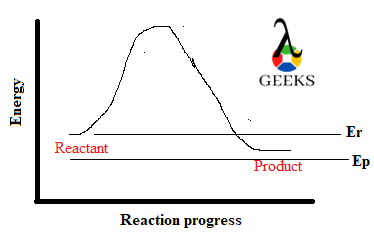Chemical process involve interaction of reactant species to form new compounds with utility in industrial applications. Let us explore the chemical reactivity of HBr and Na2SO3.
HBr is an important reagent involved in free radical reactions or metathesis synthesis. The reactions generate organo-bromine compounds which are useful alkylating agents. Na2SO3 is a water-soluble solid that works as an oxygen scavenger and a mild reducing agent.
The reactivity of HBr and Na2SO3 is used in the photographic industry and also in the textile industry as a bleaching or dechlorinating agent. Thus, important reaction-based characteristics of the chemicals are discussed.
What is the product of HBr and Na2SO3?
HBr and Na2SO3 interact to produce lithium bromide and water. The complete chemical equation is given as:
HBr + Na2SO3 = NaBr + H2O + SO2
What type of reaction is HBr + Na2SO3?
HBr+ Na2SO3 is an acid-base neutralization reaction where strong acid (HBr) and a weak base (Na2SO3) react to form a salt (NaBr) and water.
How to balance HBr + Na2SO3?
The algebraic methodology explained below can be followed to balance the reaction
HBr + Na2SO3 = NaBr + H2O + SO2,
- Each species present in the equation is marked with a respective variable (A, B, C, D, and E) to illustrate unknown coefficients.
- A Na2SO3 + B HBr = C NaBr + D H2O + E SO2
- Then, a suitable quantity thought of as the coefficient of reactants and product species, is applied to solve the equation.
- Na = 2A = C, S = A = E, O = 3A = D + 2E, H = B = 2D, Br = B = C
- The Gaussian elimination methodology is applied to ascertain all the variables and coefficients, and the outcomes are
- A = 1, B = 2, C = 2, D = 1, and E = 1
- Hence, the overall balanced equation is,
- Na2SO3 + 2 HBr = 2 NaBr + H2O + SO2
HBr + Na2SO3 titration
HBr + Na2SO3 system is performed as like acid-base titration which is carried out in the following easy steps.
Apparatus
Burette, pipette, conical flask, funnel, measuring cylinders, stands, volumetric flask, beakers.
Indicator
Methyl red is used as an indicator in the titration of Na2SO3 with HBr.
Procedure
- Na2SO3 solution is standardized by weighing certain amount and dissolving in distilled water in a volumetric flask.
- Standardized HBr solution is then pipetted out in a conical flask.
- Fill the burette with the unknown strength of Na2SO3.
- Na2SO3 solution is then added dropwise from the burette to the conical flask containing standard HBr solution.
- Methyl red as an indicator is added dropwise to the conical flask, and the process is continued by adding the Na2SO3 solution from the burette until the color of the solution turns light pink from orange.
- The color change marks the endpoint of the reaction where acid and base neutralize each other.
- The strength of Na2SO3 is determined using M1V1= M2V2
- Where M1 = Molarity of HBr solution, V1 = Volume of HBr solution, M2 = Molarity of Na2SO3 solution, V2 = Volume of Na2SO3 solution
HBr + Na2SO3 net ionic equation
The net ionic equation of HBr + Na2SO3 is
2 H+ (aq) + 2 Na+ (aq) + 2 SO3– (aq) + 2 Cl– (aq) = 2 Na+ (aq) + 2 Cl– (aq) + SO2– (aq)+ [O] + H2O (l)
The net ionic equation is obtained using the following steps
- Write the balanced chemical equation and designate the physical states of reactants and products accordingly
- Na2SO3 (s) + 2 HBr (aq) = 2 NaBr (s) + H2O (l) + SO2 (g)
- Now, strong acids, bases, and salts dissociate into ions whereas pure solid substances and molecules do not dissociate
- Thus, the net ionic equation is
- 2 H+ (aq) + 2 Na+ (aq) + 2 SO3– (aq) + 2 Cl– (aq) = 2 Na+ (aq) + 2 Cl– (aq) + SO2– (aq)+ [O] + H2O (l)
HBr + Na2SO3 conjugate pairs
- Conjugate pair of acid HBr is Br–.
- Conjugate pair of base Na2SO3 is not formed as there is no proton available for acceptance or donation.
HBr and Na2SO3 intermolecular forces
Intermolecular forces acting on HBr and Na2SO3 are:
- HBr interacts using dipole-dipole interaction and London dispersion forces among the molecules.
- Na2SO3 interacts forming ion-dipole intermolecular bonding.
HBr + Na2SO3 reaction enthalpy
HBr + Na2SO3 exhibits a reaction enthalpy of -1563.52 kJ/mol.
Is HBr + Na2SO3 a buffer solution?
HBr + Na2SO3 cannot form a buffer because the buffer is made by weak acid and salt of its conjugate base whereas HBr is not a weak acid and Na2SO3 is not a salt of the conjugate base of HBr.
Is HBr + Na2SO3 a complete reaction?
HBr + Na2SO3 is a complete reaction because the product (NaBr, water, and SO2) formed in the reaction are highly stable.
Is HBr + Na2SO3 an exothermic or endothermic reaction?
HBr + Na2SO3 is an exothermic reaction because the formation of an ionic substance (NaBr) releases heat thus determining a negative enthalpy value.

Is HBr + Na2SO3 a redox reaction?
HBr + Na2SO3 is not a redox reaction because oxidation and reduction do not occur simultaneously. The oxidation state of H and Na is +1 on both sides of the reactant and product.
HBr + Na2SO3 a precipitation reaction?
HBr + Na2SO3 is not a precipitation reaction because no precipitate is formed when the reaction ends. The product (NaBr) formed is a soluble salt that dissolves in water formed.
Is HBr + Na2SO3 reversible or irreversible reaction?
HBr + Na2SO3 is an irreversible reaction because the products obtained cannot be changed back into the original reactants in the similar reaction conditions.
Is HBr + Na2SO3 displacement reaction?
HBr + Na2SO3 is a double displacement reaction because both the anion component (Br and SO3) of the reactants is displaced with the respective cationic part (H and Na).
Conclusions
The reactivity of HBr + Na2SO3 produces NaBr in an exothermic and double displacement reaction. Na2SO3 is commercially used as an oxygen scavenger and food preservative. NaBr is an ionic salt that crystallizes in cubic crystals similar to NaCl and NaF.

Hi…..This is Avneesh Rawat, I have done my Ph.D. in Chemistry from Govind Ballabh Pant University of Agriculture and Technology. Currently, I am working as Project Associate in CSIR, CIMAP, Pantnagar. I am specializing in handling sophisticated GC/MS, GC, HPLC, FTIR instrumentation.